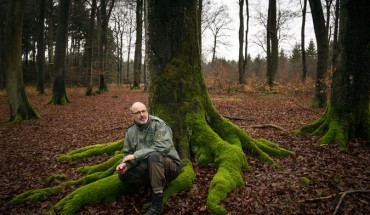By Dr. Philip Zimbardo
Forty-four years later, a searing film starring Billy Crudup brings the chilling research to life
In a Florida prison, a mentally ill inmate dies after guards punish him by locking him in a scalding hot shower for well over an hour. At Rikers Island jail, a guard argues with a frail 52-year-old inmate, and proceeds to beat the man to death while two other guards hold him on the floor. The three guards then fabricate a story that the inmate assaulted them.
As state and federal investigations and lawsuits bring these abuses, and many others to public attention, we are horrified and repelled. How can someone do such things to another person? How could one guard look away, or cover up another’s vicious deeds? Then we recall the violent degradations that American Military Police Guards used against Iraqi prisoners in Abu Ghraib Prison, all the while documenting their deeds with graphic images. Looking at these situations from the outside, we tell ourselves they must be evil people, bad apples; we could never lose our moral compass in such a way. Think again. It’s not that simple.
In the summer of 1971, I created a research project focusing on the psychological effects of prison life, for both the prisoners themselves and the prison guards. My research team and I reproduced a prison environment in a Stanford University basement. We tried to recreate essential features of American prisons in our jail setting. We advertised for volunteers, and assembled a group of 24 healthy, intelligent male college students from all over the nation. A flip of the coin randomly determined which 12 would be guards and which 12 would be prisoners. I took the role of Prison Superintendent, one assistant was the Warden, and two others were Lieutenants. Prisoners lived in this jail 24/7, while guards worked eight-hour shifts in what was to be a two-week intense simulation, where everything and everyone was under observation. The simple premise was to understand what happens when you put only good people in a bad situation.
In short order, the students disappeared into their roles as Prisoners or Guards.
Ordinary guys slipped into doing extraordinarily bad things to other guys — who were actually students just like them, in different costumes.
Other healthy guys soon got sick mentally, unable to cope with the learned helplessness imposed on them in that unique, unfamiliar setting. They didn’t offer comfort to their buddies as they broke down, nor did those who adopted a “good guard” persona ever do anything to limit the sadistic excesses of the cruel guards heading their shifts. It was a vivid demonstration of how a hostile situation can overwhelm our natural dispositions toward kindness and compassion; of the ease with which a person who is given authority can then abuse that power. After the fifth prisoner had an emotional breakdown in just five days, the study was terminated prematurely.
This dramatic study has become known as the Stanford Prison Experiment, and it’s the subject of a new film directed by Kyle Patrick Alvarez, written by Tim Talbott. I was happy to consult with the filmmakers on the production of The Stanford Prison Experiment, and pleased about how well they captured the essence of this demonstration of situational power. The physical prison, and the roles, the rules, and the costumes soon combined to become a psychological prison in the minds of everyone caught up in its grip. By day two, no one thought of it as an “experiment” any longer, but as a prison where the only way out was through Parole Board approval. It really was a descent into hell, hour-by-hour, day-by-day, shift-by-shift. And it happened very quickly. There’s nothing in the movie that stretches reality; the Stanford County Jail it depicts is the same Stanford County Jail that I experienced.
What is special about this movie is the way it enables viewers to look through the observation window as if they were part of the prison staff, watching this remarkable drama slowly unfold — and simultaneously, observe those observers as well. The audience witnesses the gradual character transformations taking place, and in the end, the creative sadism that flourished. Viewers can see what the readers of my book, The Lucifer Effect, can only imagine, as these young students became the characters their roles indicated. The power of that situation enveloped not only the participants, but my staff and me as well. The movie tracks the emotional changes in the lead character — me — as my initial compassion and intellectual curiosity got diluted and submerged over time. In my adopted role of Prison Superintendent, I soon became insensitive to obvious prisoner suffering, failing to limit guard abuses. My girlfriend (now my wife) was the only person who saw the situation for what it had become, when she visited the jail on the fifth night. She said to me, “I know you from other situations. I know you’re a caring, loving person. I don’t recognize who you have become here, but realize that these boys are suffering and YOU are responsible for it.” So, how do we guard against these powerful situations?
Such prisons of the mind are everywhere — in mental hospitals, jails, summer camps, high schools, businesses, and more.
Can people learn how to recognize when authority oversteps its bounds, and cultivate the tools to resist and push back? I know they can.
I have channeled my 50 years of experience as a psychologist and researcher into creating the Heroic Imagination Project (HIP), a non-profit established six years ago. HIP teaches ordinary people how to stand up, speak out, and take effective actions in challenging situations in their lives. I believe that almost anyone can become an Everyday Hero by doing daily deeds of social goodness in their new roles as hero in training. By learning the skills, strategies, and knowledge of wise and effective social action, and channeling the private virtue of compassion into this civic virtue of heroism, youth and elders can change their world. Our social psychological lessons, “Understanding Human Nature,” are creating a revolution in education in many high schools, colleges, and businesses in America, Hungary, Poland, and Italy, with other nations in the wings.
Finally, we replace the old notion of heroes as unique people, born to their elite status, or Super Heroes (who lack brains), with hero squads who work collaboratively, doing extra-ordinary deeds of daily heroism in their families, schools, businesses, and communities.
The Stanford Prison Experiment is now in theaters. It will be available on-demand on cable as of Friday, July 24. For more information about Dr. Zimbardo and the Heroic Imagination Project, visit www.heroicimagination.org.




